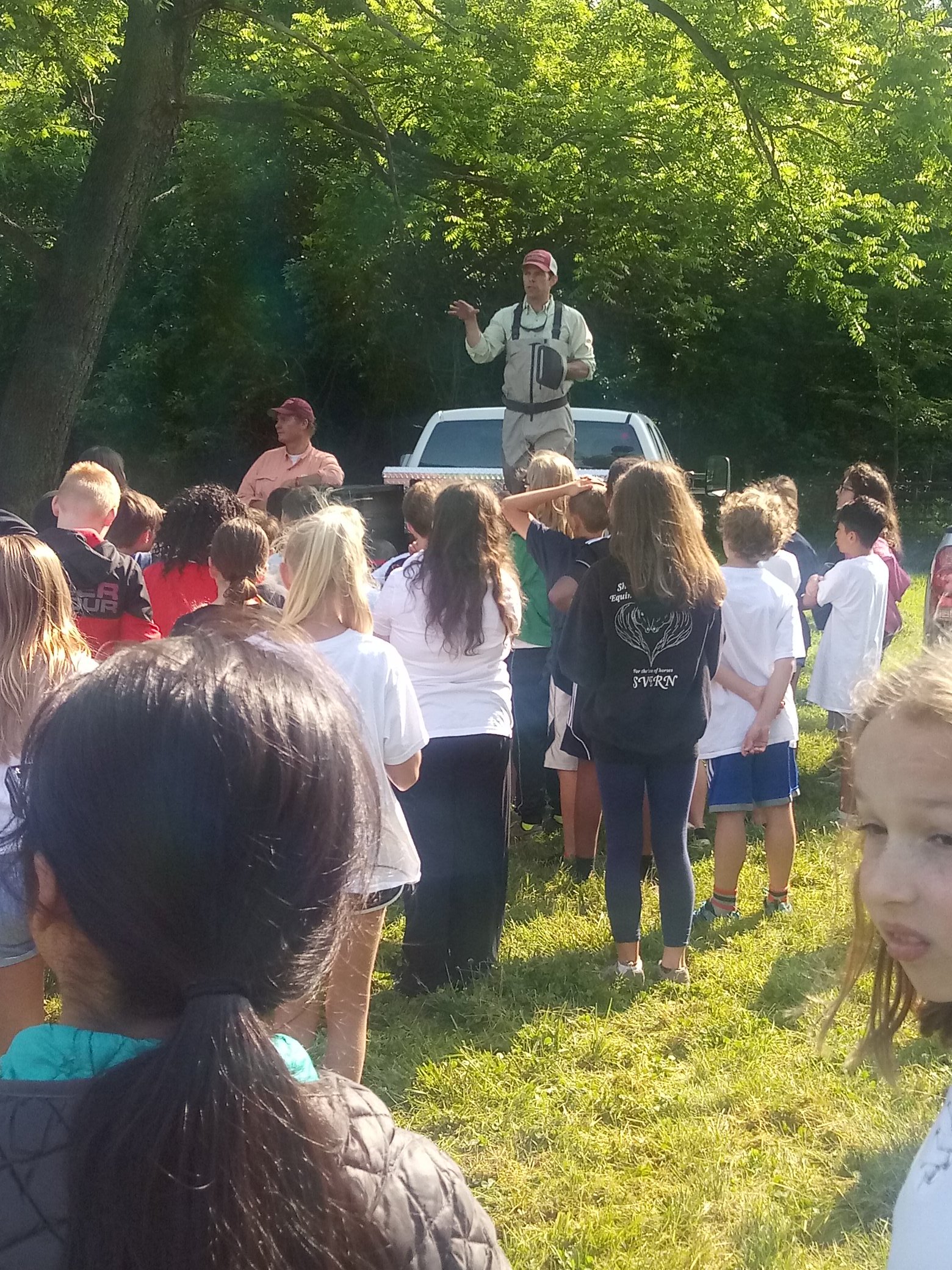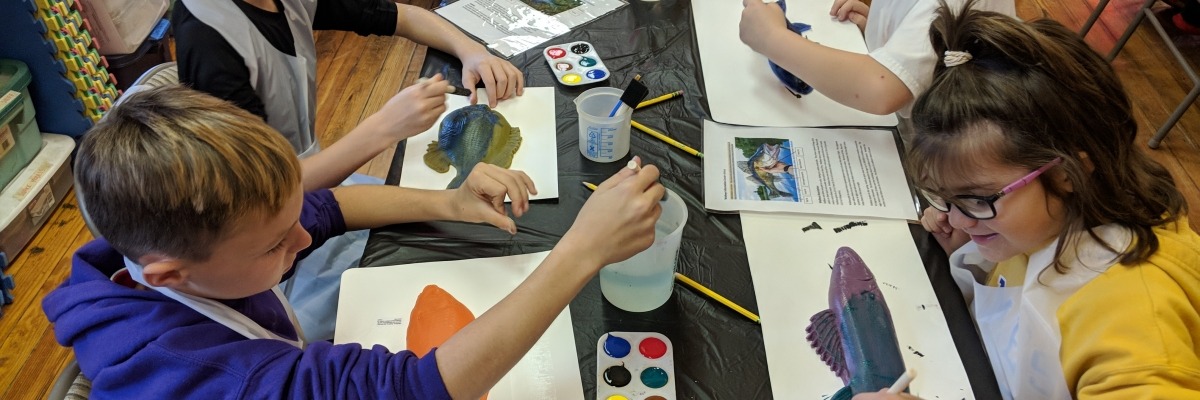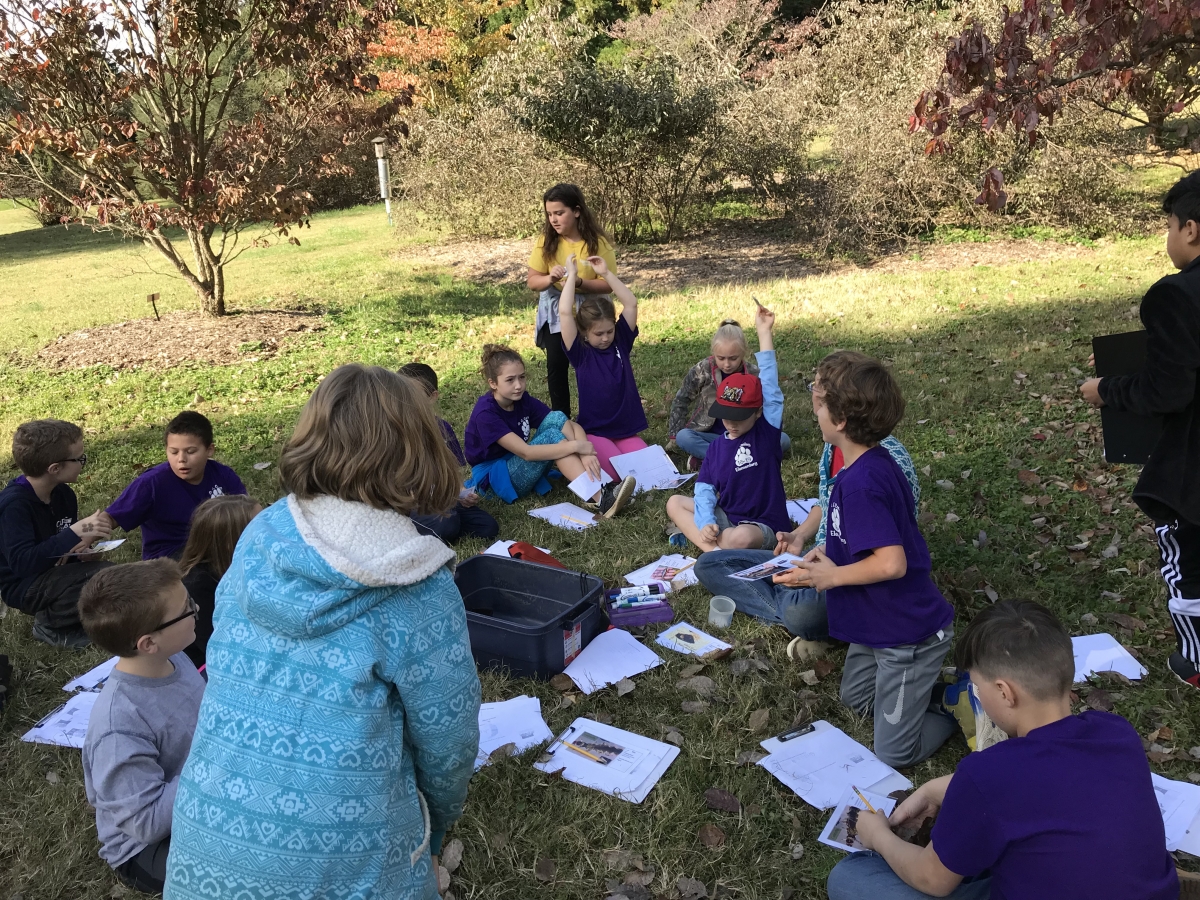
Grade 4 Project. To better understand our Clarke County watersheds, 4th graders are raising Virginia's state fish, the brook trout, from egg to juvenile before releasing them into a healthy trout habitat. But how can we figure out if a habitat meets the needs of our trout at each stage in their life cycle?
Driving Question: What stream habitat in the Clarke County watershed meets our brook trout’s life needs?
Virtual Watershed Investigation: Explore this 3D virtual experience of five water habitats in Clarke County to figure out which trout life needs can be met at each location. Record your findings in the habitat assessment sheet (PDF). Or you can also click on the links at the bottom of this page.
Project Elements
Issue Investigation- In mathematics, students graph the life spans of trout and water temperature over time. In language arts, students explore and determine how to share our findings with the community. With science, students learn about trout habitats, life cycles, and diets. Students care for their young trout as eggs, alevin, and fry. In history/social science, students explore the importance of water resources throughout history and if Brook Trout are native to all of Virginia's physiographic regions.
Field Experiences- Students conduct hands-on investigations as they apply their new knowledge to understand trout life needs and potential issues with the survival of their trout.
Click on the links below for our field investigation lesson plans.
Fish Printing |
Sediment Experiment |
Trout Food Web |
Trout Journey Game |
Action Project- Students evaluate local waterways to assess suitability for the release of their trout. They share their findings with students in other grades, their families, and their community. The trout are released into a suitable local waterway.
Synthesis and Conclusion- Students study the life cycle of the brook trout, and learn the definition of a watershed, as well as what it means to have a healthy or unhealthy watershed. They demonstrate how pollution and erosion affect the trout. Students also promote preserving the Chesapeake Bay Watershed, asking parents to sign a pledge to keep the watershed healthy.
During the 2020-2021 school year, we adjusted many of our field investigations for remote learning. We created investigation kits that contained materials for students to carry out our hands-on investigations in their personal learning environments with virtual teaching. A video of the contents of the investigation kits can be found here.

Shenandoah River at the Route 50 boat ramp:
Temperature (and how to measure)
Spout Run in Millwood
Page Brook at Powhatan School, Millwood
Roseville Run at Boyce Elementary School
Dog Run in Rose Hill Park, Berryville

This project was funded by a NOAA B-WET grant # NA18NMF4570315
Developing MWEE capacity through systemic, vertically aligned, integrated curricula, grades K-12
